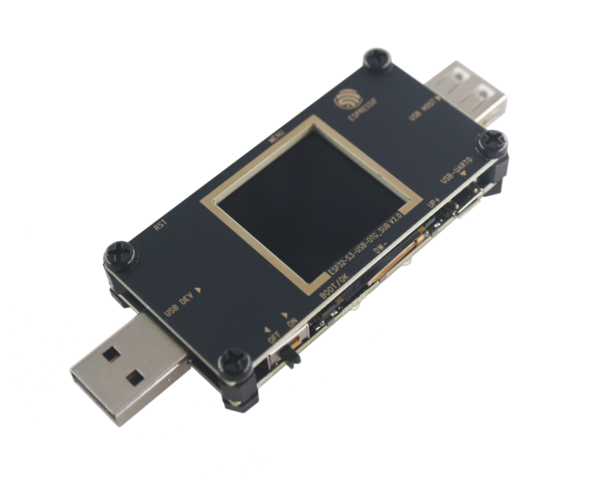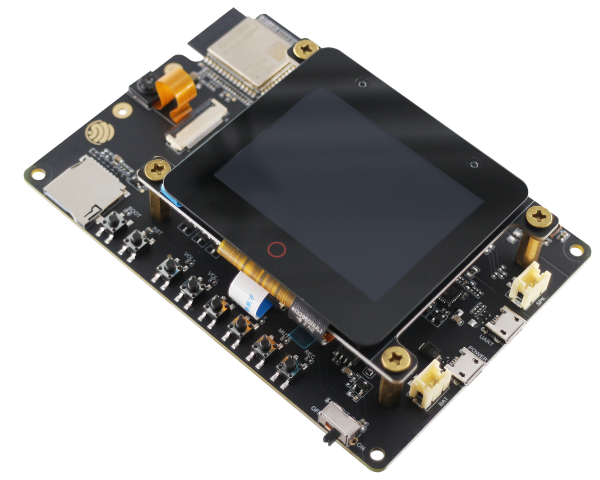Board selection
Note
This document is automatically translated using AI. Please excuse any detailed errors. The official English version is still in progress.
In the rapidly changing IoT market, Espressif has launched a series of distinctive ESP chips to fully meet the evolving demands. Choosing the right ESP chip is particularly important as it will directly affect performance and functionality of the product. Choose the suitable ESP chip based on the project’s application scenario, power consumption, wireless communication, GPIO and memory requirements.
To help developers better understand the ESP chips and modules, below is a brief comparison chart.
Chip |
Year of Release |
Application Scenarios |
Wireless Functions |
GPIO |
SRAM |
PSRAM Support |
|---|---|---|---|---|---|---|
2025 |
A high-performance SoC with rich IO connectivity, HMI, and excellent safety features, featuring AI instruction extensions, advanced memory subsystems, and integrated high-speed peripherals. |
N/A |
55 |
768 KB HP L2MEM,32 KB LP SRAM,8 KB TCM |
✔️ |
|
2025 |
The first RISC-V SoC that supports 2.4GHz & 5GHz dual-band Wi-Fi 6, Bluetooth 5 (LE), and IEEE 802.15.4 (Zigbee, Thread), specifically designed for IoT applications that require efficient wireless transmission. |
2.4GHz & 5GHz Wi-Fi 6 + BLE5.0 + Thread + Zigbee |
29 |
384 KB HP SRAM, 16 KB LP SRAM |
✔️ |
|
2023 |
Ultra-low power IoT devices with long battery life, Thread border routers, Matter gateways, Zigbee bridges |
BLE 5.0 + Wi-Fi 6 + Thread + Zigbee |
30 |
512 KB |
✖️ |
|
2025 |
Ultra-low power IoT devices with long-lasting battery life, WiFi & BLE network cards |
BLE 5.0 + 2.4GHz Wi-Fi 6 (IEEE 802.11ax) |
30 |
320 KB |
✔️ |
|
2022 |
Sockets, lighting, sensors, simple smart home appliances |
BLE 5.0 + Wi-Fi 4 |
14 |
272 KB |
✖️ |
|
2021 |
Thread border routers, Matter gateways, Zigbee bridges |
BLE 5.0 + Thread + Zigbee |
19 |
320 KB |
✔️ |
|
2020 |
Smart cameras, face recognition, voice recognition, voice wake-up, real-time data collection and processing, complex peripheral control |
BLE 5.0 + Wi-Fi 4 |
36 |
512 KB |
✔️ |
|
2020 |
Real-time data collection and processing, complex peripheral control |
Wi-Fi 4 |
36 |
320 KB |
✔️ |
|
2020 |
Electrical lighting, switch sockets, smart home appliances, industrial control field |
BLE 5.0 + Wi-Fi 4 |
15 |
400 KB |
✖️ |
|
2016 |
Recommended to use the latest released ESP32-S3 |
BLE 4.2 + BT + Wi-Fi 4 |
26 |
520 KB |
✔️ |
|
2014 |
Recommended to use modern, more secure, and powerful alternatives ESP32-C2 or ESP32-C3 |
Wi-Fi 4 |
11 |
160 KB |
✖️ |
Note
The above is just a brief introduction to the ESP chip series. If you want to further understand the specific details and features of each series of chips or modules, you can use the ESP Chip & Module Selection Tool to easily obtain relevant informations. This tool will select the ESP chip most suitable for the developer’s application based on project requirements and technical specifications.
Chips, Modules, Development Boards
Espressif officially provides chips, modules, and development boards, which have different uses and features in the development and deployment process of IoT applications.
Chip:
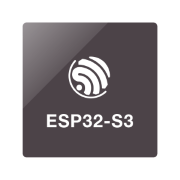
The ESP series chip is the fundamental integrated circuit (IC) manufactured by Espressif, serving as the core component of the entire product line. These chips typically integrate processors (CPUs), memory, communication interfaces, General Purpose Input Output (GPIO), and other hardware functionalities. They can be directly integrated into custom circuit boards to create highly specialized IoT devices, making them suitable for projects demanding compact size and specific functionalities.
The chips require connection to external components for power and functionality. Additionally, developing products with these chips involves certification for wireless communication protocols, which can be somewhat intricate.
-

The module is a package of Espressif’s chip, integrating the chip, crystal, antenna, and flash. Espressif’s modules usually have FCC, CE, and other certifications, allowing developers to focus more on the development of applications, without having to worry about the hardware matching design of the antenna and the details of RF certification, thus accelerating the speed of product launch.
Compared to individual chips, modules offer greater convenience in hardware design and project development.
-
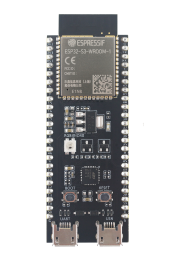
The development board is a comprehensive development platform that integrates Espressif modules. It includes various interfaces and resources for debugging, development, and testing, and facilitates software debugging and firmware flashing during the development phase. Typically, in the early stages of project development, rapid testing and verification are conducted using the development board. As the product moves towards mass production, the module is integrated into the final design.
Moreover, the development board serves as an essential tool for developers new to Espressif chips, enabling them to quickly familiarize themselves with the platform. It accelerates the verification of developers’ ideas and designs, enabling rapid prototyping.
Selection Guide
Choosing the right chip, module, or development board depends on the project’s requirements, timeline, technical capabilities, and budget. Here are some factors to consider when choosing:
Rapid development and prototype verification:
Development boards are highly beneficial for rapid function development and verification in the early stages of the project
Custom hardware design:
If a highly customized circuit board and hardware design are required, chips are a more suitable choice
Note
Custom designs require certification through wireless communication protocols, which may increase development time and cost.
Speed to market:
Modules usually can speed up the product’s time-to-market, with comprehensive radio frequency certification reports. Developers can focus more on the development of applications, without having to deal with the details of antenna hardware matching design and radio frequency certification.
Cost budget:
Using chips typically costs less, but custom design may increase time and development difficulty. Modules have a relatively higher cost, but can speed up the development process
Team technical capabilities:
If your team is new to Espressif chips or has limited technical resources, using modules is easier to get started, accelerates the project process and reduces technical risks. Using chips requires higher technical capabilities and more development experience
Pin and Storage Configuration:
GPIO Quantity: Calculate the required number of pins based on the actual number of peripherals controlled. Common GPIO requirements include:
UART, I2C, SPI (each interface requires 2-4 GPIO pins)
Control signals, such as LED, button, relay (each requires 1 GPIO pin)
RAM & PSRAM Size: Used for storing data generated at runtime, such as cache, variables, task stack.
Simple applications, such as sensor collection: The internal RAM of the ESP32-C series is sufficient.
For large-scale applications, such as those involving cameras, LVGL graphical interfaces, etc.: prioritize chips that support PSRAM.
Flash Size: Used for storing firmware, web pages, configurations, etc.
Only for storing firmware and Over-the-Air (OTA) updates: Often 4 MB is sufficient
Includes web pages or multilingual resources: Recommended 8 MB and above
ESP32-P4
Supported functions:
55 programmable GPIO pins (QFN10*10), supporting MIPI-CSI (Integrated Image Signal Processor ISP) and MIPI-DSI interfaces, USB OTG 2.0 HS, Ethernet, and SDIO Host 3.0.
Available for development solutions:
Development board
ESP32-P4-Function-EV-Board : ESP32-P4-Function-EV-Board is a multimedia development board based on the ESP32-P4 chip.
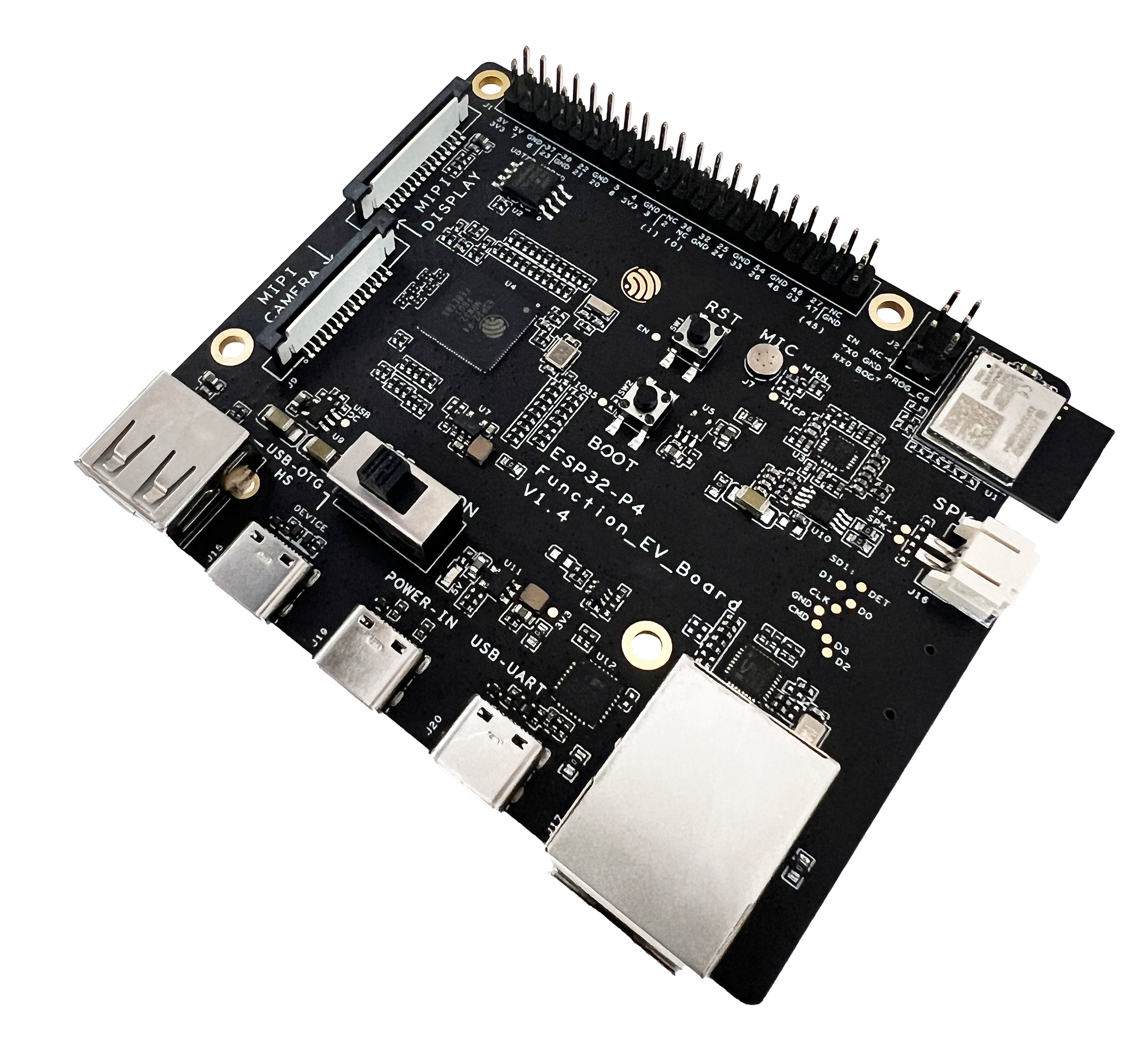
ESP32-P4-EYE : ESP32-P4-EYE is a vision development board designed for camera applications.
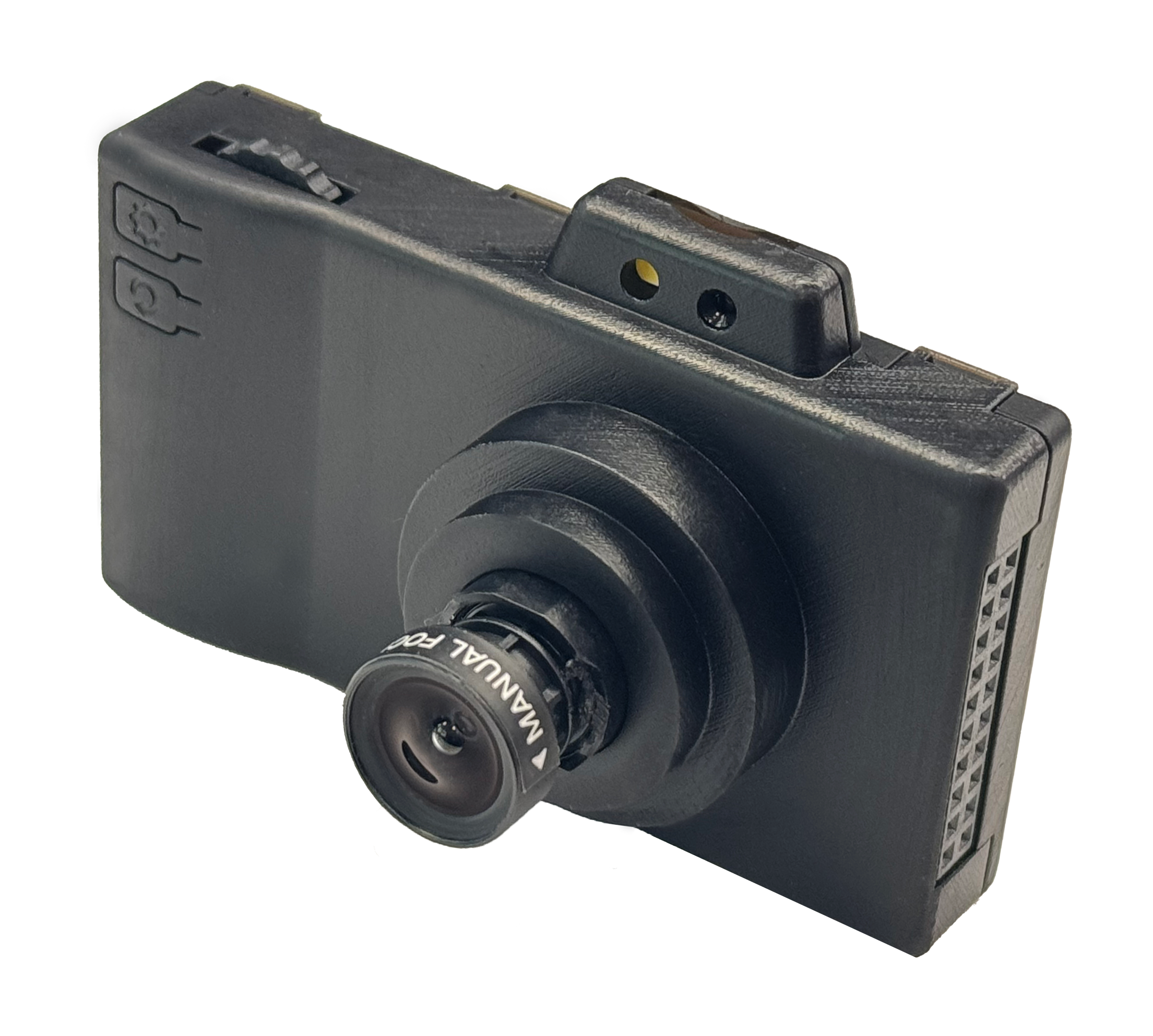
Hardware Design Guide
Purchase link:
ESP32-C5
Supported functions:
29 programmable GPIO pins (QFN6*6), supporting SDIO, SPI, UART, I2C, I2S, RMT, TWAI, and PWM.
Suitable for development schemes: Ultra-low power IoT devices with long-lasting battery life, 2.4GHz & 5GHz WiFi 6, Thread border routers, Matter gateways, Zigbee bridges.
Development Board
ESP32-C5-DevKitC-1 : ESP32-C6-DevKitC-1 is a beginner-level development board that can be used to burn and experience examples in IDF.
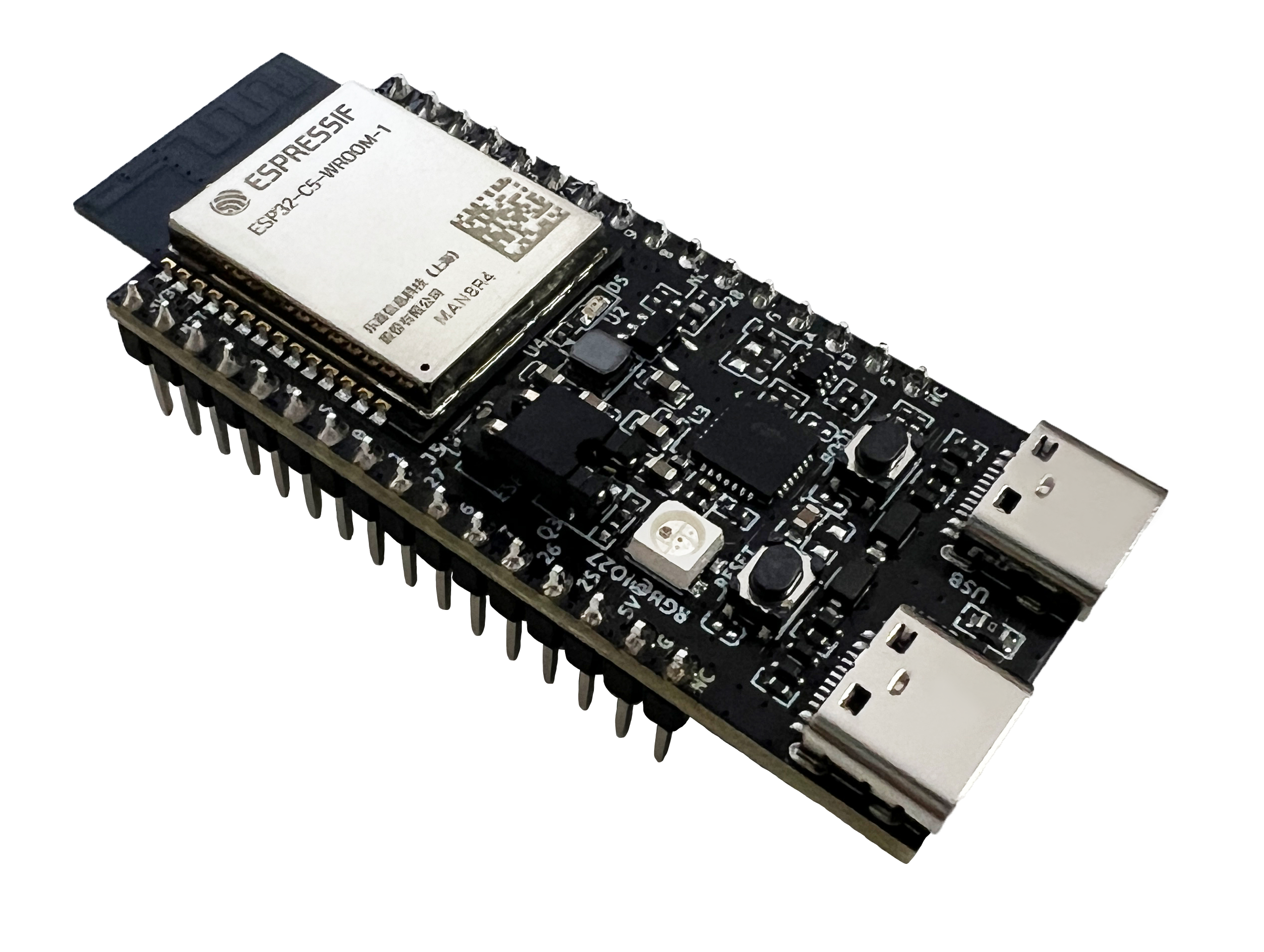
Hardware Design Guide
Purchase link:
ESP32-C6
Supported Features:
30 programmable GPIO pins (QFN40) or 22 (QFN32), supporting SPI, UART, I2C, I2S, RMT, TWAI, and PWM, etc.
Can be used for development solutions: ultra-low power IoT devices with long battery life, Thread border routers, Matter gateways, Zigbee bridges
Development Boards
ESP32-C6-DevKitC-1 : ESP32-C6-DevKitC-1 is an entry-level development board that can be used to flash and experience examples in IDF.
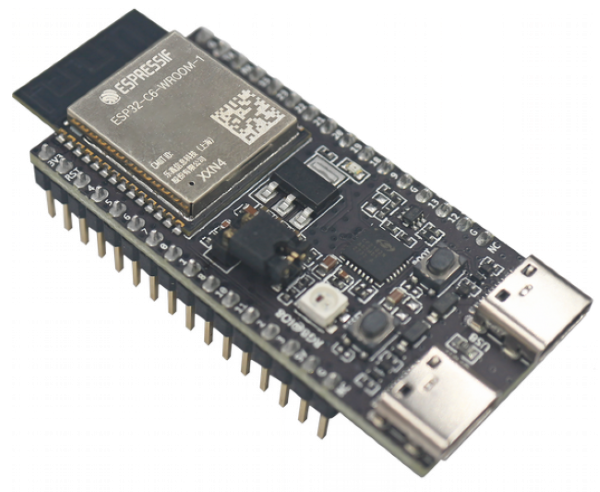
ESP32-C6-DevKitM-1 : ESP32-C6-DevKitCM-1 is an entry-level development board that can be used to flash and experience examples in IDF.
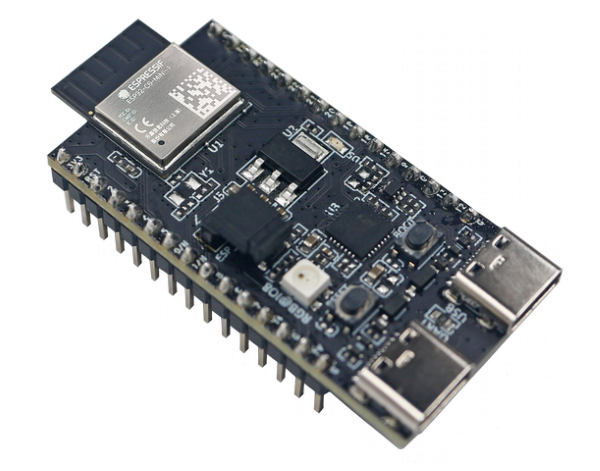
Hardware Design Guide
Purchase Link:
ESP32-C61
Supported functions:
30 programmable GPIO pins, supporting UART, I2C, I2S, ADC, SPI, and PWM, etc.
Suitable for development schemes: Ultra-low power consumption IoT devices with long-lasting battery life, WiFi & BLE network cards
Development Board
ESP32-C61-DevKitC-1 : ESP32-C6-DevKitC-1 is a beginner-level development board that can be used to burn and experience examples in IDF.
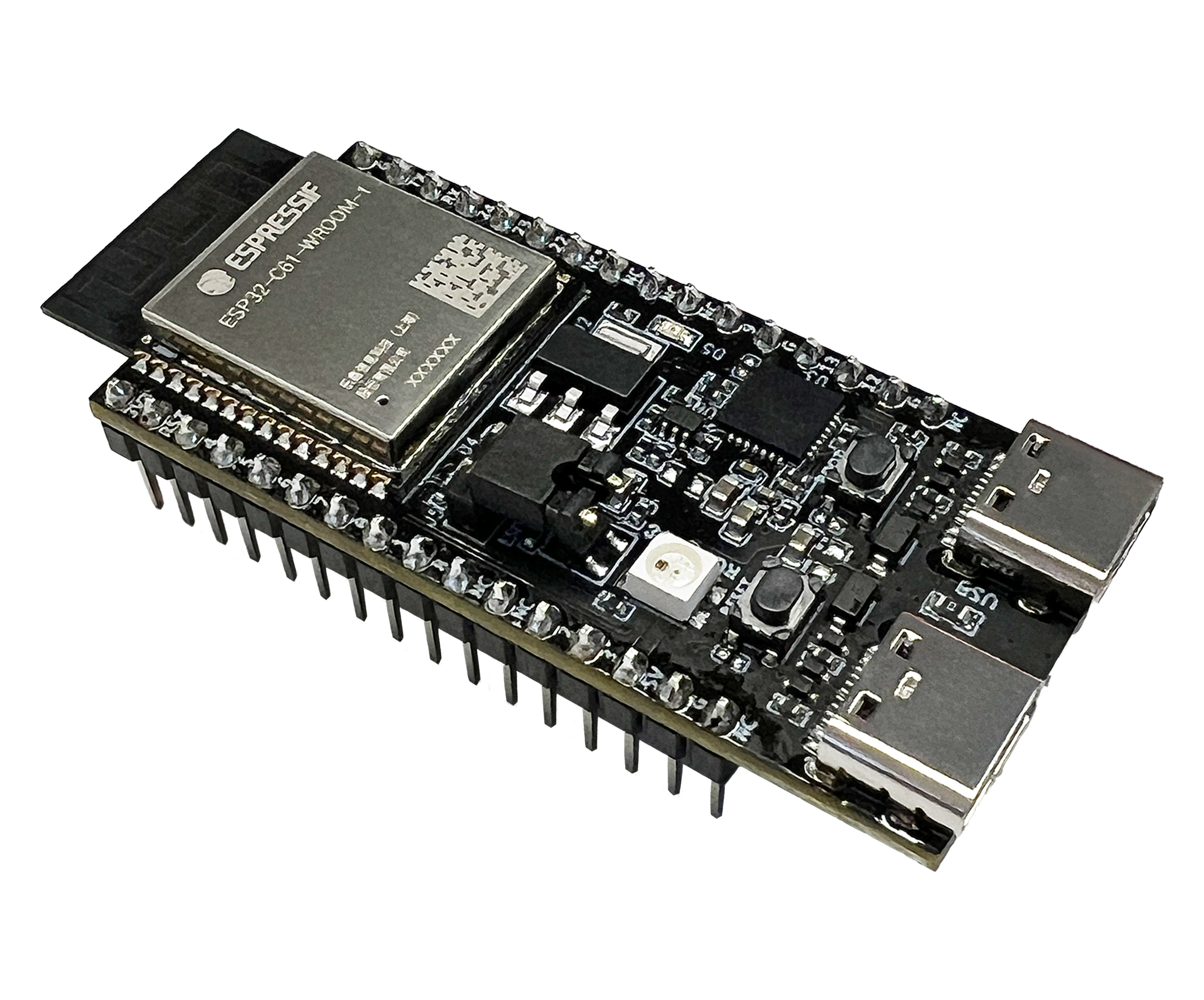
Hardware Design Guide
Purchase link:
ESP32-C2
Supported Features:
14 programmable GPIO pins: SPI, UART, I2C, LED PWM controller, SAR ADC/DAC, temperature sensor
Can be used for development schemes: sockets, lighting, sensors, simple smart home appliances
Development Board
ESP8684-DevKitM-1 : ESP8684-DevKitM-1 is an entry-level development board that can be used to flash and experience examples in IDF.
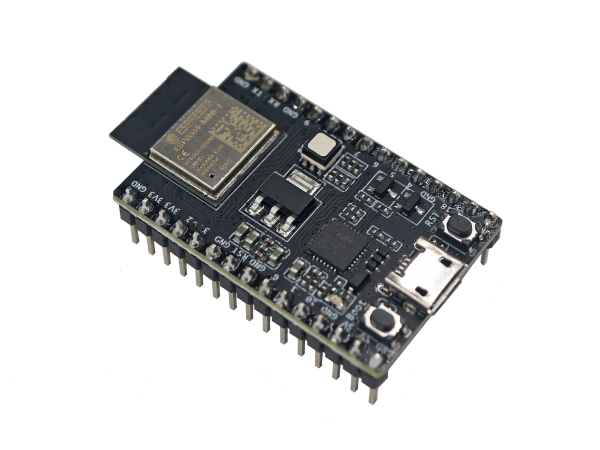
Hardware Design Guide
Purchase Link:
ESP32-H2
Supported Features:
19 programmable GPIO pins, supporting common peripheral interfaces such as UART, SPI, I2C, I2S, infrared transceiver, LED PWM, full-speed USB serial/JTAG controller, GDMA, MCPWM
Can be used for development schemes: Thread border router, Matter gateway, Zigbee bridge
Development Board
ESP32-H2-DevKitM-1 : ESP32-H2-DevKitM-1 is an entry-level development board that can be used to provision and experience examples in IDF.
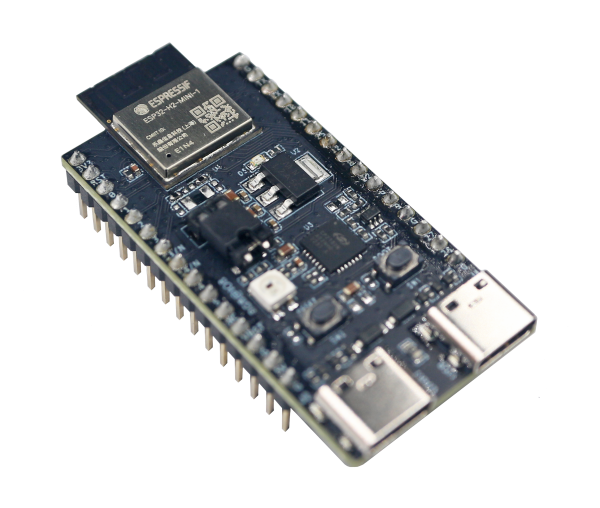
Hardware Design Guide
Purchase Link:
ESP32-S3
Supported Features:
Common peripheral interfaces such as SPI, I2S, I2C, PWM, RMT, ADC, UART, SD/MMC host controller, and TWAI controller, etc.
Can be used for development schemes: Smart camera, face recognition, voice recognition, voice wake-up, real-time data collection and processing, complex peripheral control
Development Board:
EESP32-S3-DevKitC-1 : ESP32-S3-DevKitC-1 is an entry-level development board that can be used to provision and experience examples in IDF.
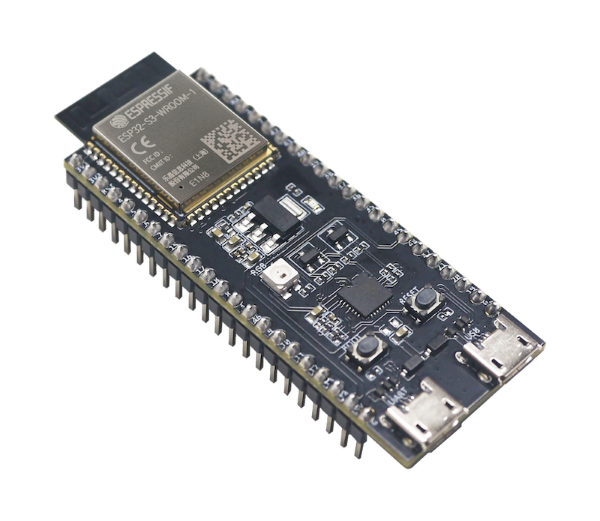
ESP32-S3-DevKitM-1 : ESP32-S3-DevKitM-1 is a beginner-friendly development board that can be used to flash and experience examples in IDF.
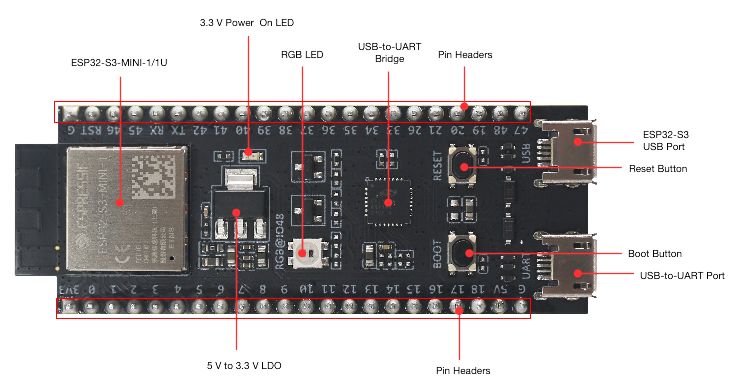
ESP32-S3-BOX : ESP-BOX provides users with a platform for developing and controlling smart home devices based on voice assistant + touch screen control, sensors, infrared controllers, and smart Wi-Fi gateways.
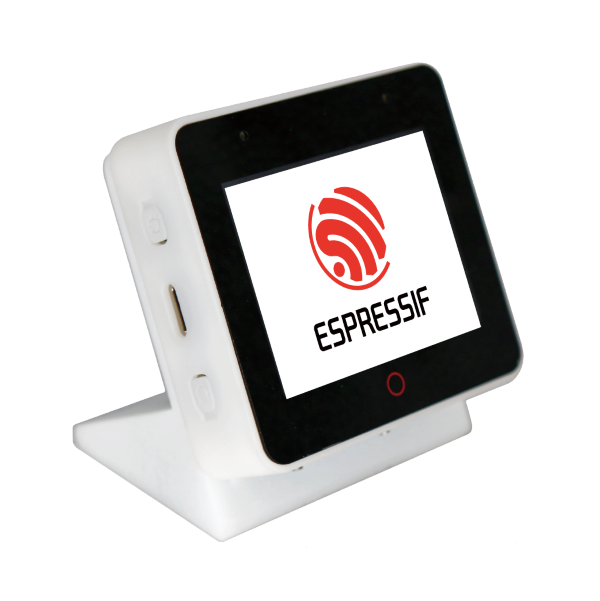
ESP32-S3-EYE : ESP32-S3-EYE is a small AI (Artificial Intelligence) development board launched by Espressif. The development board is equipped with a 2-megapixel camera, an LCD display, and a microphone, suitable for applications such as image recognition and audio processing. You can use ESP-WHO to develop various AIoT (Artificial Intelligence of Things) applications, such as smart doorbells, monitoring systems, face recognition attendance machines, etc.
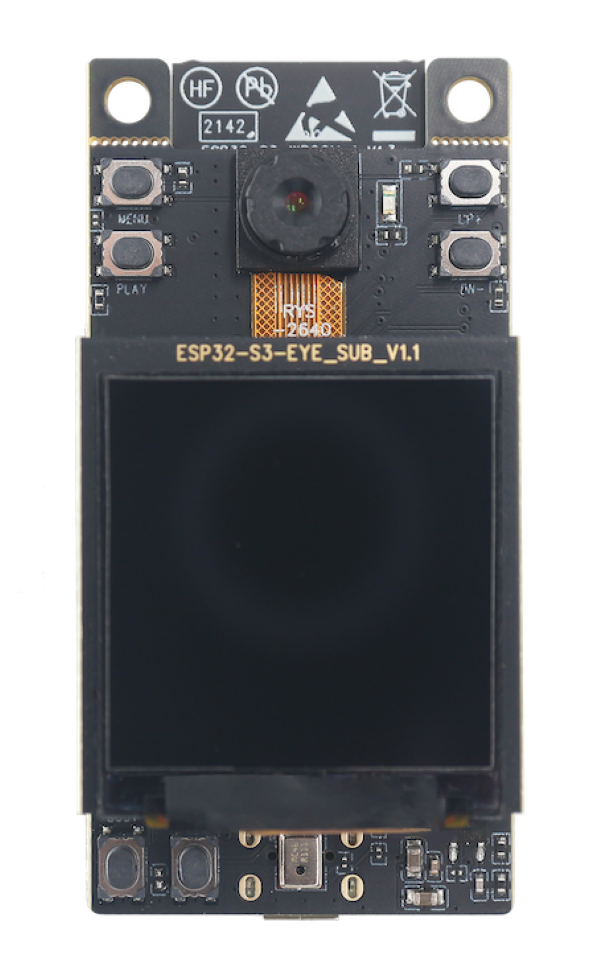
ESP32-S3-USB-OTG : ESP32-S3-USB-OTG is a development board focused on USB-OTG function verification and application development, based on ESP32-S3 SoC, supports Wi-Fi and BLE 5.0 wireless functions, supports USB host and USB slave functions. It can be used to develop wireless storage devices, Wi-Fi network cards, LTE MiFi, multimedia devices, virtual keyboards and mice, and other applications.
ESP32-S3-Korvo-1 : ESP32-S3-Korvo-1 is an AI development board launched by Espressif, equipped with the ESP32-S3 chip and Espressif’s voice recognition SDK ESP-Skainet. ESP32-S3-Korvo-1 supports voice wake-up and offline voice command recognition in both Chinese and English. You can use ESP-Skainet to develop various voice recognition applications, such as smart screens, smart plugs, smart switches, etc.
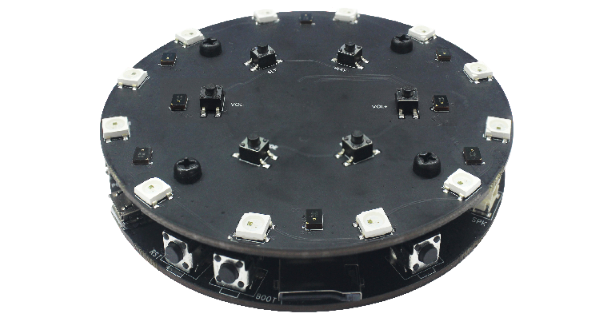
ESP32-S3-Korvo-2 : ESP32-S3-Korvo-2 is a multimedia development board based on the ESP32-S3 chip, equipped with a dual microphone array, supporting voice recognition and near/far field voice wake-up. It also carries peripherals such as LCD, camera, microSD card, etc., and can support JPEG-based video stream processing, meeting the development needs of users for low-cost, low-power, and networked audio and video products.
Hardware Design Guide
Purchase link:
ESP32-S2
Supported Features:
Full-speed USB OTG interface, SPI, I2S, UART, I2C, LED PWM, LCD interface, Camera interface, ADC, DAC, touch sensor
Can be used for development solutions: real-time data collection and processing, complex peripheral control
Development Boards:
ESP32-S2-DevKitC-1 : ESP32-S2-DevKitC-1 is a beginner-level development board that can be used to flash and experience examples in IDF.
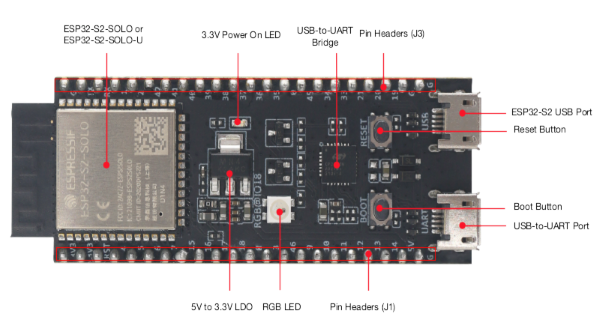
ESP32-S2-HMI-DevKit-1 : ESP32-S2-HMI-DevKit-1 is designed for GUI application scenarios, capable of realizing smart home interactive panels, speakers with screens, alarm clocks, and other human-machine interactive interfaces for intelligent control. This development board has a wealth of onboard sensors and expansion interfaces, making it easy for users to quickly carry out secondary development and implement various functions.
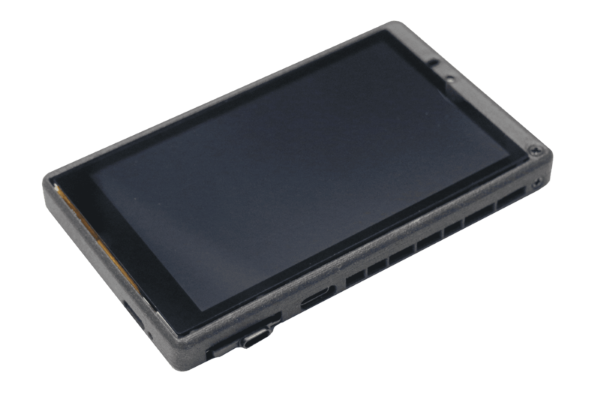
ESP32-S2-Saola-1 : ESP32-S2-Saola-1 is a small development board based on ESP32-S2 from Espressif, which can be used to flash and experience examples in IDF.
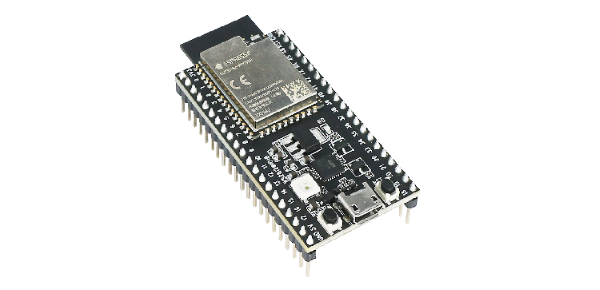
Hardware Design Guide
Purchase link:
ESP32-C3
Supported Features:
Rich communication interfaces and GPIO pins, supporting multiple external SPI, Dual SPI, Quad SPI, QPI flash
Can be used for development solutions: electrical lighting, switch sockets, smart home appliances, industrial control fields
Development Board
ESP32-C3-DevKitM-1 : ESP32-C3-DevKitM-1 is an entry-level development board, using the ESP32-C3-MINI-1 module, which is named for its small size. It can be used to flash and experience examples in IDF.
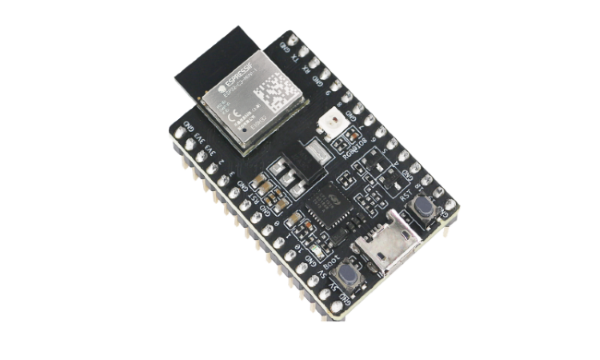
ESP32-C3-DevKitC-02 : ESP32-C3-DevKitC-02 is an entry-level development board, which can be used to flash and experience examples in IDF.
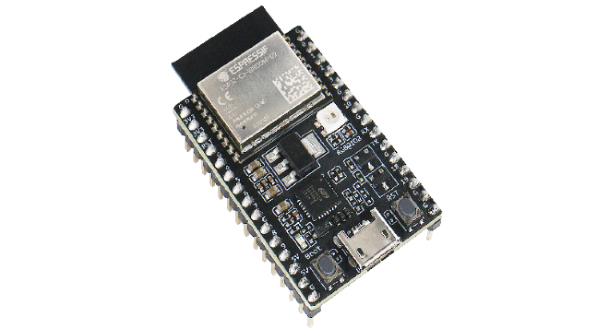
ESP32-C3-DevKit-RUST-1 : ESP32-C3-DevKit-RUST-1 is an entry-level development board, which can be used to flash and experience examples in IDF.
ESP32-C3-AWS-ExpressLink-DevKit : ESP32-C3-AWS-ExpressLink-DevKit uses an abstract application programming interface (API) to connect any host application to AWS IoT Core and its services. It has the shape of an Arduino expansion board, so it can be directly plugged into a standard Arduino. It can also be used with Raspberry Pi or any other host.

Hardware Design Guide
Purchase link:
ESP32
Supported Features:
Provides multiple GPIO pins, including digital input/output, analog input, PWM output, I2C, SPI, UART, etc.
Development plan: Recommend using the latest released ESP32-S3
Development Boards
ESP32-DevKitC : ESP32-DevKitC V4 is a small development board based on ESP32, which can be used to flash and experience examples in IDF.
ESP-EYE : ESP-EYE is a development board aimed at the face recognition and voice recognition market, equipped with a 200 W pixel camera, digital microphone, which can meet various AI application development needs. In addition, this development board also supports Wi-Fi image transmission, Micro USB debugging and power supply, can achieve voice wake-up, face detection and recognition functions, and can assist users in developing highly integrated AI solutions.
ESP32-LyraT : ESP32-LyraT is designed for the audio application market. It provides an audio codec chip, onboard dual microphones, headphone output, two 3-watt speaker outputs, dual auxiliary inputs, and lithium battery charging management hardware support.
In addition, there are seven other development boards in the ESP32 series for audio processing, but we recommend developers to use the latest ESP32-S3 series audio development boards.
ESP32-LCDKit : ESP32-LCDKit is an HMI (Human-Machine Interaction) development board with ESP32-DevKitC as the core, which can be connected to an external screen and integrates peripherals such as SD-Card, DAC-Audio, mainly used for HMI related development and evaluation.
ESP32-Ethernet-Kit : The ESP32-Ethernet-Kit is an Ethernet to Wi-Fi development board that can provide Wi-Fi connectivity for Ethernet devices. To provide more flexible power options, the ESP32-Ethernet-Kit also supports Power over Ethernet (PoE).
Hardware Design Guide
Purchase Link:
ESP8266
Supported Features:
Provides multiple GPIO pins that can be used for various purposes, such as UART, I2C, SPI, etc.
Development Solution: It is recommended to use the latest released ESP32-C2 or ESP32-C3
Development Board
ESP8266-DevKitC : The ESP8266-DevKitC is a compact ESP8266 development board that can be used to flash and experience examples in IDF.
